Paris-Roubaix is the road race of the year for cycling tech. Riders often turn to highly modified or otherwise unique bikes to tackle the brutal cobbled secteurs of northern France that define the event.
As a website truly dedicated to nerding out on bike tech, this makes the Hell of the North one of BikeRadar’s favourite events of the year.
Our traditional tech coverage of the race pretty much takes over the entire homepage for much of mid-April. However, with this year’s edition cancelled amidst the ongoing global coronavirus pandemic, we’ve decided to turn to the extensive BikeRadar archives and our team’s collective bike knowledge to bring you our selection of the very coolest bikes to have ever graced the cobblestones of Paris-Roubaix.
Revisiting these iconic bikes, and seeing how the tech used in the race has evolved, has conjured fond memories for the BikeRadar team. Which bike is your favourite? Vote in our poll at the end of the article.
Or would you have picked a different bike as the coolest Paris-Roubaix machine of all time? Be sure to leave your thoughts and any photos in the comments.
Related reading
Gilbert Duclos-Lassalle’s 1993 Lemond with RockShox Roubaix fork
George Scott | Editor
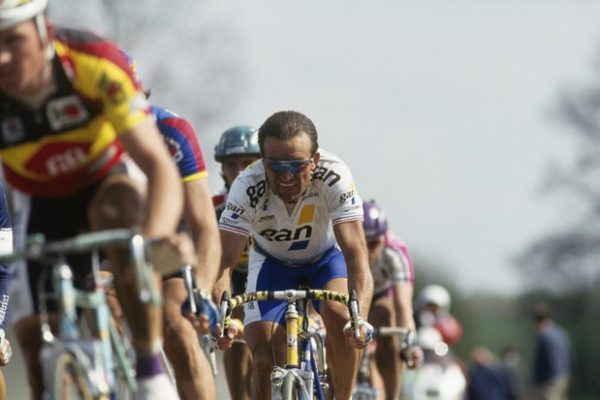
Paris-Roubaix has long been the proving ground for some of cycling’s quirkier and more daring designs – some of the bikes here are testament to that – and the early 1990s were a hotbed of experimentation.
Greg Lemond and Gilbert Duclos-Lassalle, both riding for Team Z, arrived at the 1991 edition of Paris-Roubaix with RockShox’ new Roubaix suspension fork, which featured 30mm of travel to tame the bone-crushing pavé of the Hell of the North.
Suspension on a road bike? Yep, that’s not a new thing.
Duclos-Lassalle finished 12th in 1991 but returned to win the race in 1992 and, with the team now sponsored by GAN, doubled-up in 1993 on the bike pictured here, once again with RockShox’ cushy fork.
The Frenchman followed Franco Ballerini after the Italian attacked on the notorious Carrefour de l’Arbre and clung on until Roubaix’s famous velodrome, where the 38-year-old Duclos-Lassalle surprised his (on paper) stronger rival and won the sprint by inches.
Andrei Tchmil then made it a hat-trick of wins for RockShox in 1994.
Greg Van Avermaet’s 2017 BMC Granfondo RBX
Simon Bromley | Technical writer
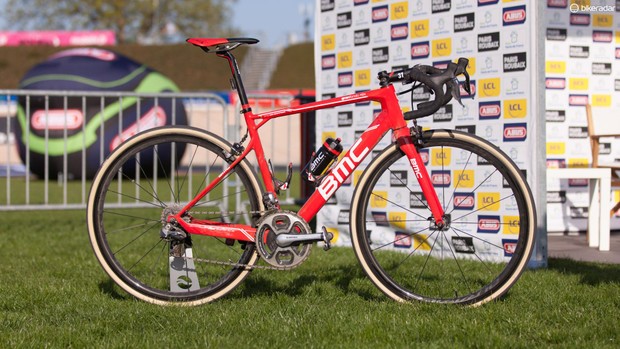
Paris-Roubaix is such a crazy race that riders and teams often resort to outlandish, ugly bikes to try and conquer the cobbles.
However, six-time Flandrien of the Year, Greg Van Avermaet, knows that road cycling is a sport that values winning with style and panache above almost all else. One shouldn’t try to soften the cobbles too much. Winning Roubaix is glorious because it’s hard.
Van Avermaet’s 2017 race-winning BMC Granfondo RBX has all the hallmarks of that style. A modern, angular carbon frame? Check. A go-fast red paint job and subtly colour-matched components? Check. A long and low cockpit with classic-bend handlebars? Check. A custom, gold SRM head unit because you’ve won the Olympic road race? Check.
It was built with Shimano’s Dura-Ace 9000 Di2 groupset, surely one of the prettiest Shimano groupsets ever, with 53-44t chainrings and classy Dura-Ace 9100 C40 wheels.
The only concessions to the cobbles were beautiful 30mm tan-wall Vittoria tubulars and an inline brake lever on the handlebar tops.
No superfluous suspension, wacky geometry or even double wrapped handlebar tape was needed for Van Avermaet to take the win in the fastest Paris-Roubaix of all time (the average speed for the 257km race was 45.204 kph).
When thinking about the bikes of Paris-Roubaix it’s easy to remember the ridiculous ones, but the elegance and simplicity of Van Avermaet’s BMC makes it my personal favourite.
The only thing that could have improved it was more mud.
Any 2000s carbon bike with Ambrosio Nemesis rims
Jack Luke | Assistant editor
I got into road riding at the tail end of the 2000s when shallow box-section alloy rims were still being used at Roubaix.
Offering increased strength and – dubiously – comfort over the carbon wheelsets of the day, these wheels were a common sight at all of the cobbled Classics until surprisingly recently.
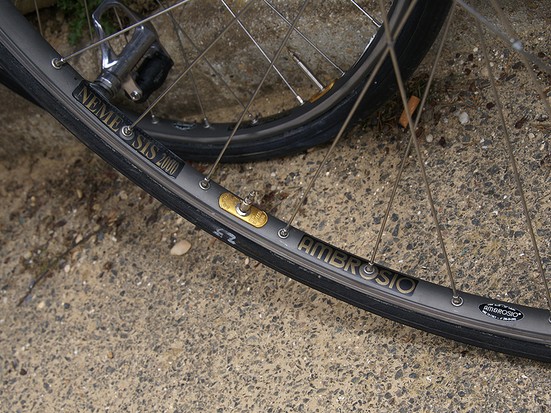
Nostalgia for those nascent days of my roadie life definitely plays a part here, but I still think there is nothing as cool as a classic triple-triangle carbon frameset (yes, carbon frames can now be considered classic) fitted with a set of triple-laced Ambrosio Nemesis or Mavic Reflex wheels.
If those rims are laced to silver Dura-Ace 7900-era hubs? Woof. If the rims are ceramic coated? I’ll need to sit down. If they’re fitted with Vittoria Pavé tyres with green sidewalls? Be still my beating heart!
(Long before either of us started our roles at BikeRadar, Matthew Loveridge and I worked at The Bike Station in Edinburgh. I fondly remember setting aside a knackered Ambrosio rim that had been donated for Matthew that he later pried the super-cool badge off of because… well, it was cool and they used them at Roubaix.)
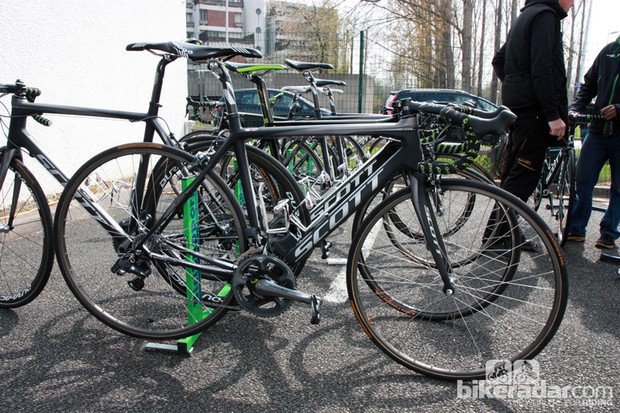
I could have chosen any number of bikes that fit these criteria, but the likes of Svein Tuft’s Scott CR1 (above) used at the 2012 edition of the race is just about perfect. Clean lines, a long and low cockpit, and those classic wheels – I’m kissing my hands like an Italian chef just thinking about it.
If I were to make a concession and include shallow carbon wheels in my selection, Robert Gesink’s 2009 Giant TCR Advanced SL (below) would definitely make the cut – running a white bike at Roubaix is a very big mood, and I’m into it.
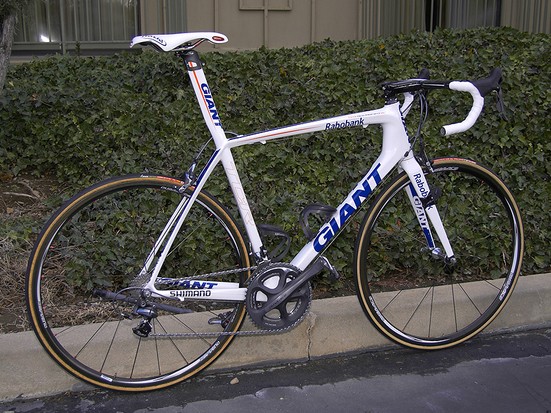
A special mention must also go to every cantilever-brake-equipped bike that’s been seen at the race.
Often used to improve clearances in the event of muddy conditions, it was not uncommon to see modified road bikes or cyclocross bikes used at the race in years gone by.
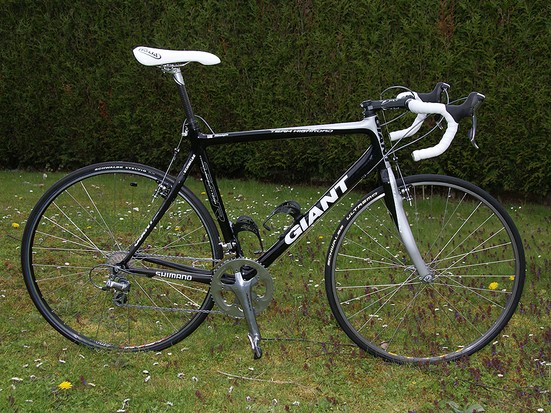
Sticking with the Giant theme, I’ve picked out George Hincapie’s spare bike (above) from the 2008 edition of the race.
The bike used the fork from a Giant TCX ‘cross frameset and the rear-end was modified with longer dropouts to improve stability.
It says a lot about bike design of the day that it was deemed necessary to use cantilever brakes to accommodate the “special 25mm-wide version of Schwalbe’s Stelvio tubular”. 25mm! Wide! How times have changed (for the better).
Johan Museeuw’s 1994 full suspension Bianchi
Will Poole | Workshop manager
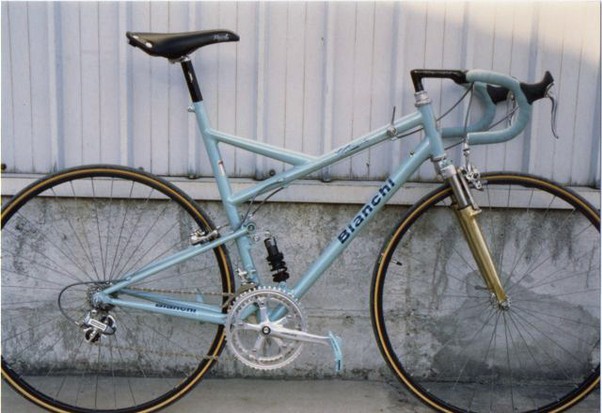
The mid-nineties was a time of upheaval; technology was infiltrating cycling at every turn, and while road cycling had given mountain bikes indexed gears, the fat-tyred cousins were about to hand something back.
Bianchi, a brand steeped in racing tradition and history came to the party that is Paris-Roubaix in 1994 with an outfit that still gets people talking – a full suspension bike.
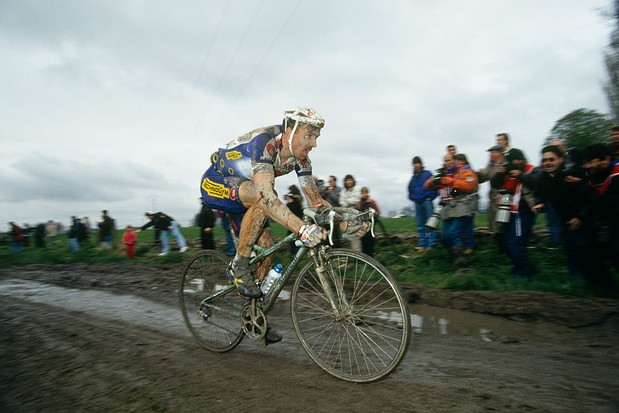
Ultimately it didn’t finish the race. The frame snapped 24km from home while Johan Museeuw was chasing eventual winner Andrei Tchmil. However, that failure – at least for me – increases its iconic status.
That Museeuw was riding for the legendary Mapei team at the time only adds to the mystique, as does the fact that suspension dropped off the radar following the 1994 running of the race.
Turning 11 a few short weeks before the race, I was at a highly impressionable stage of my young life, and seeing the images of a full suspension bike being used in one of the Monuments (not that I understood what that meant at the time) blew my tiny little mind.
Magnus Bäckstedt’s custom 2004 Bianchi EV
Warren Rossiter | Senior technical editor road
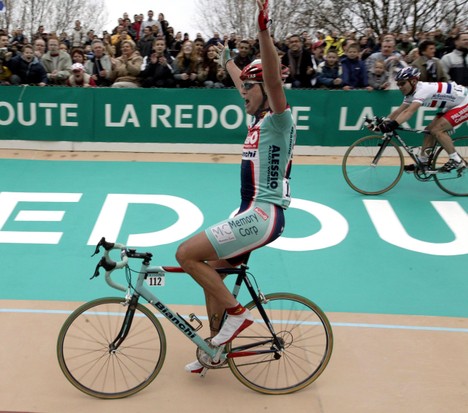
The 2004 Paris Roubaix had a stellar line-up – true legends competed on a dry dusty day, with young guns such as Fabian Cancellara, Tom Boonen and Thomas Voeckler going shoulder-to-shoulder with Classics kings such as Johan Museeuw and Peter Van Petegem.
The race, however, didn’t exactly go to the form book and was won by Magnus Bäckstedt – the Swedish powerhouse who, at 6ft4in and 94kg, didn’t look like a typical pro.
In a sprint finish, he outsmarted and outpaced Tristan Hoffman, Roger Hammond and Fabian Cancellara. The race ended up in that order, and it’s also British cyclocross legend Roger Hammond’s best road race finish, too.
Aside from it being a great example of Roubaix, the Bianchi Bäckstedt rode holds a special place for me.
I was lucky enough to visit Bianchi’s Bergamo facility more than a decade ago, and with a photographer in tow, we proceeded to photograph key bikes from its wonderful collection.
Fausto Coppi and Gimondi’s bikes were both too historic and fragile to ride. Then there were Pantani’s bikes and Bugno’s. These were fascinating but also tiny (I’m six-foot two).
Bäckstedt’s bike, however, was perfect (perhaps even a little bit big), but I couldn’t resist taking it for a spin around the factory.
When I grilled the engineers and builders on the bike as part of a story I was writing, it was a fascinating tale (I can’t verify any exaggeration or hubris so forgive me).
They explained that Bäckstedt had an off-the-shelf Titanium EV, the idea being titanium would give a compliant edge for the rigours of the Classics, but in testing, he broke it.
The EV was a lightweight ti frame and highly butted, so a custom frame was made for him with increased wall thicknesses (and less extreme butting) – that broke, too.
Eventually, they settled on what was effectively a plain gauge titanium tubeset filled with the EV foam core that Bianchi used to use to strengthen up its ultralight aluminium frames.
So, while the bike should have given Bäckstedt the edge, the added weight and strengthening required probably put him at a disadvantage, making the achievements of that day in April 2004 all the greater.
For the record, Bäckstedt won the race in 6hr 40min 26sec – an average of 39.1 kph/24.296mph.
Eddy Merckx’s 1973 De Rosa
Tom Marvin | Technical editor
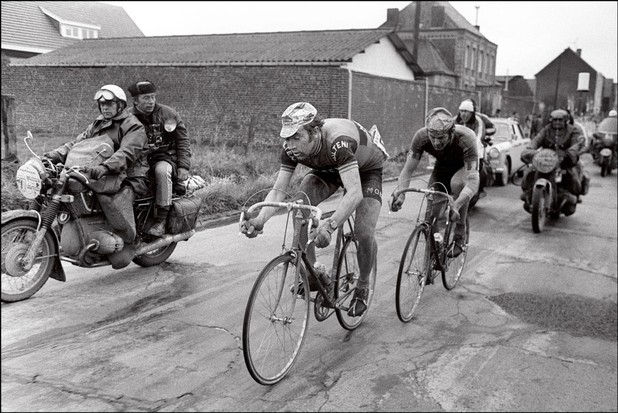
Eddy Merckx had been informally riding bikes built for him by Ugo De Rosa since the late 1960s, but this picture, from the 1973 Paris-Roubaix, was the real start of his and the Molteni team’s successful association with the brand.
In 1973, Merckx won more than 50 races, including a Vuelta/Giro double, Liège–Bastogne–Liège and, of course, Paris-Roubaix.
The bike itself is a beautifully built steel frame from a timeless era when everything in road cycling was cool.
It’s likely that the bike featured De Rosa’s signature heart-shaped cutouts under the bottom bracket, as well as drilled inner fork tangs and drilled Campagnolo down tube shifters.
Merckx rode a 59.5cm frame, fitting his 182cm / 5ft11 ½in stature. While we don’t have the weight of Merckx’s bikes, an American fan of Merckx commissioned De Rosa to build an exact replica of his team bike in 1973, with the weight coming in at 9.5kg.
Merckx himself later formed his own bicycle brand, under his name, and called upon Ugo De Rosa to be his technical consultant during its formation.
Interestingly, this photo from Merckx’s third and final Roubaix victory shows him racing Roger De Vlaeminck, who won Paris-Roubaix four of the 14 times he entered, with another six appearances on the podium (in 1973 he came seventh, in a top-eight featuring solely Belgian riders). By 1976 De Vlaeminck was also racing De Rosa’s bikes on the Sanson team.
Fabian Cancellara’s 2014 Trek Domane Classics
Matthew Loveridge | Senior writer
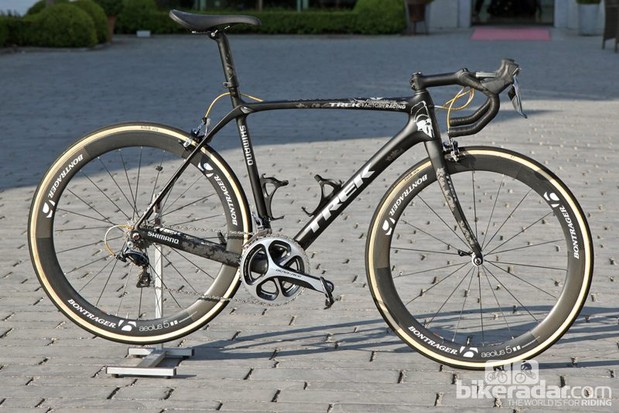
I’ve nominated Spartacus’ rangy Domane because it’s a very cool bike with some personal significance to me.
I worked at a Trek dealer in the summer of 2013 and, in between swearing at bottom brackets, developed a real admiration for the Domane.
It was a bike that truly shook up the endurance road bike market when it first launched in 2012 thanks to its clever IsoSpeed decoupler that added lots of rear-end squish.
The machine ridden by Fabian Cancellara at the 2014 edition of Paris–Roubaix was the pro-geometry Domane Classics (our pro bike feature on it is here).
The precise timeline of how this bike came to be is a little fuzzy in my mind, but I believe Trek debuted the pro version of the Domane at the 2013 Classics before offering it to regular punters later that year.
The Domane Classics combined the comfort features of the standard Domane with much racier geometry, making for a devastatingly capable bike in the right hands.
Cancellara’s 2014 bike featured some slightly questionable personalised graphics, but the sober colour scheme combined with tan-wall 27mm FMB tubulars (my kink) works for me.
The whole thing is rendered doubly cool by Cancellara’s choice of mechanical Dura-Ace 9000 – perhaps my favourite groupset of all time – at a time when virtually all his peers were riding Di2 groupsets.
Cancellara, it was said, preferred the mechanical feedback of the standard groupset when he was battering over the cobbles.
He had won the 2013 Roubaix on a very similar bike, and he started the 2014 race as the clear favourite, having sprinted to victory at Flanders the previous weekend.
As things turned out, he came third behind Niki Terpstra and John Degenkolb, but that doesn’t make this bike any less cool.
Writing this has made me realise something; in the intervening years, I’ve somehow never actually ridden a Domane. Someday I should meet my heroes…


